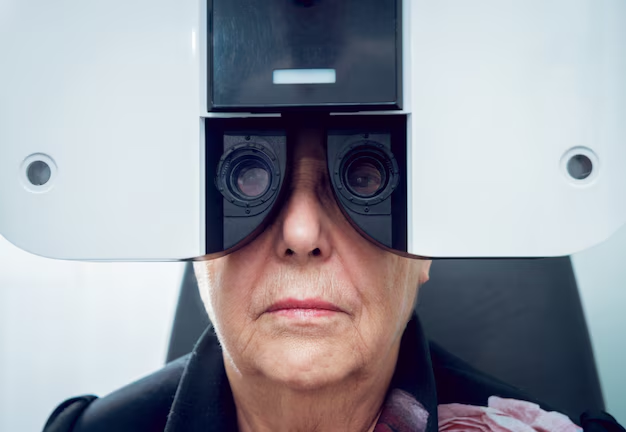Understanding Cataract Surgery: Can Cataracts Return After the Operation?
If you or a loved one is preparing for cataract surgery, you might be wondering, Can cataracts come back after surgery? Let's dive deep into this commonly asked question and elucidate various facets of cataract surgery to ensure you have a comprehensive understanding.
🎯 The Basics of Cataract Surgery
Cataracts occur when the lens of the eye becomes cloudy, leading to impaired vision. These form slowly, often affecting people as they age. Cataract surgery involves removing the cloudy lens and replacing it with an artificial lens. This procedure is renowned for its safety and effectiveness, significantly improving the quality of life for millions globally. But, the concern about cataracts returning post-surgery is not uncommon.
🌟 Can Cataracts Return? Understanding Secondary Cataracts
The quick answer is no, cataracts themselves cannot return. Once the lens is removed, it cannot cloud again. However, there is a twist: a condition called posterior capsule opacification (PCO) can occur. This is often mistakenly referred to as a secondary cataract.
What is Posterior Capsule Opacification?
Posterior Capsule Opacification is the most common complication following cataract surgery, occurring in a significant number of patients months or years after their procedure. It happens when the membrane (or capsule) that holds the artificial lens in place becomes cloudy, similar to how cataracts affect the original lens. This cloudiness can lead to impaired vision, resembling the symptoms of a cataract.
🚦 Identifying Symptoms of Posterior Capsule Opacification
If someone who has undergone cataract surgery experiences vision difficulties, it could be PCO. Here are common signs to look out for:
- Blurry or hazy vision: Despite a successful surgery, vision seems cloudy once more.
- Glare and halos: Bright lights might seem to have a strong glare or rings around them.
- Difficulty seeing at night: Performance in low-light conditions could worsen.
- Decline in overall visual acuity: A dip in the ability to discern fine details.
These symptoms can affect quality of life, but there’s a solution.
🔧 Treating Posterior Capsule Opacification
The good news is that PCO is treatable with a procedure called YAG laser capsulotomy. Let's break down this procedure:
What is YAG Laser Capsulotomy?
This non-invasive procedure is quick and painless. It involves using a laser to create a small opening in the cloudy capsule, allowing light to pass through unobstructed, restoring clear vision.
- Duration: The procedure usually takes only a few minutes.
- Pain and Discomfort: Generally, it's painless, with many experiencing no discomfort at all.
- Recovery: Most patients notice an immediate improvement in their vision, and full recovery is swift, often within a day.
- Risks: Although rare, the procedure carries minimal risks, such as retinal detachment or increased intraocular pressure.
🏥 Considerations Before and After Cataract Surgery
Deciding on cataract surgery involves several considerations. Here’s what potential patients should keep in mind:
Pre-Surgery Steps
- Choose an Experienced Surgeon: Opt for a well-regarded eye surgeon, with experience and a good track record in cataract surgery.
- Understand the Procedure: Comprehensive consultations are crucial. Make sure your questions are answered and you understand the details and implications of surgery.
- Discuss Lifestyle Needs: Discuss with your surgeon your lifestyle and vision goals to choose the best artificial lens option.
Post-Surgery Care
- Follow-Up Appointments: Regular check-ups ensure the healing process is on track and any complications are spotted early.
- Follow Care Instructions: Post-operative care may include using prescribed eye drops and avoiding strenuous activities until cleared by your doctor.
- Monitor Vision Changes: Stay vigilant for changes in vision, especially those mentioned above. If you notice anything concerning, contact your eye care provider.
🔍 Spotlight on Lens Options and Technologies
Today's advancements in lens technology offer various options catering to different visual goals:
- Monofocal Lenses: Corrects vision at one distance—near or far.
- Multifocal Lenses: Designed to improve vision at multiple distances.
- Toric Lenses: Specifically for patients with astigmatism, correcting curvature deficits.
Understanding these can enhance decision-making, ensuring optimal post-surgery satisfaction.
📝 Summary of Key Takeaways
- Cataracts can't return once the lens is removed; however, the common complication known as Posterior Capsule Opacification can mimic cataract symptoms.
- YAG Laser Capsulotomy is an effective treatment for PCO, restoring clear vision efficiently and painlessly.
- Pre- and post-surgery care greatly influence outcomes and long-term satisfaction.
- Lens options and technologies should align with lifestyle needs and expectations.
Quick Reference Guide 🌟
- Symptoms of PCO: Blurred vision, glare, decreased night vision.
- Treatment: YAG laser capsulotomy.
- Pre-Surgery: Choose experienced surgeons, understand options.
- Post-Surgery: Adhere to follow-up care, report vision changes.
- Lens Options: Choose based on lifestyle and visual goals.
By understanding the intricacies of cataract surgery and its potential complications, you can approach your decision with confidence. Remember, while cataracts cannot technically return, staying informed and proactive can ensure that your post-surgery journey is smooth and satisfying.
